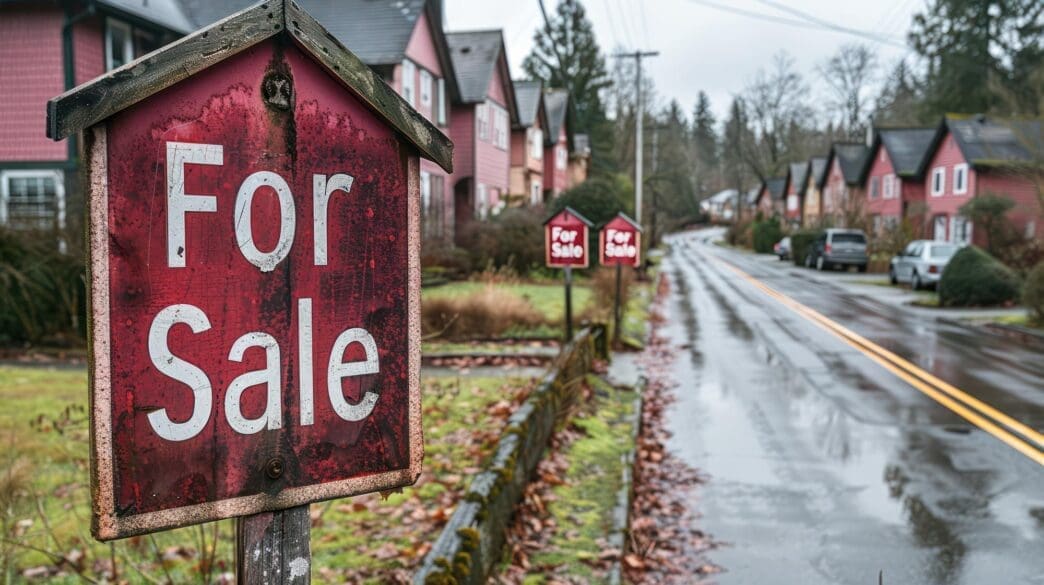Executive Summary
- U.S. home vacancies slightly declined to 1.32% of all residential homes in the fourth quarter, maintaining consistently low rates amidst high demand and a significant housing shortfall.
- “Zombie” properties, homes abandoned before foreclosure completion, decreased to 7,448, representing 3.25% of all vacant homes, a positive sign for local housing markets.
- The nation continues to grapple with a substantial housing shortfall, estimated between 4 million and 7 million homes, a key factor driving persistent demand and low vacancy rates.
The Trajectory So Far
- The U.S. housing market continues to grapple with a significant shortfall, estimated between 4 million and 7 million homes, largely due to persistent underbuilding since the 2008 financial crisis, which fuels strong demand and maintains consistently low vacancy rates despite high home prices, providing the context for the observed slight dip in overall vacancies and the positive trend of declining “zombie” properties.
Assessing Risk and Value
- The sustained low national home vacancy rate, coupled with a significant housing shortfall, suggests continued strong demand for residential properties, which could support long-term value appreciation and rental income for investors. The decline in “zombie” properties further indicates improving market stability and reduced systemic risk from abandoned foreclosures, though the slightly higher vacancy rate for investor-owned properties emphasizes the ongoing importance of effective property management to maximize returns.
Expert Predictions and Forecasts
- The U.S. housing market continues to exhibit consistently low vacancy rates, indicating strong demand that is absorbing available housing despite record-high prices and a significant national housing shortfall estimated to be between 4 million and 7 million homes.
- The decline in “zombie” properties, homes abandoned by owners prior to foreclosure completion, is viewed as a positive development for local housing markets, suggesting improved stability even amidst an increase in overall foreclosure filings.
U.S. home vacancies declined slightly in the fourth quarter, dropping to 1.38 million properties, or 1.32% of all residential homes, according to a recent report by real estate market analytics firm Attom. This marginal decrease from 1.33% in the prior quarter comes as the nation grapples with a significant housing shortfall, with millions of homes estimated to be needed to meet demand.
The report, released on October 31, 2025, also highlighted a positive trend in “zombie” properties, which are homes abandoned by owners prior to the completion of foreclosure proceedings. The number of these properties decreased to 7,448, representing 3.25% of all vacant homes, down from 3.38% in the third quarter.
Vacancy Rates Remain Low Amidst High Demand
Despite record-high home prices, demand for housing remains strong, a factor reflected in the consistently low vacancy rates. Rob Barber, CEO of Attom, noted that the national vacancy rate has held steady at around 1.4% for nearly four years.
This sustained low rate indicates that the market continues to absorb available housing, even as the overall supply struggles to keep pace. The U.S. housing shortfall, a consequence of persistent underbuilding since the 2008 financial crisis, is estimated to be between 4 million and 7 million homes, with projections suggesting it could take up to a decade to rectify.
“Zombie” Properties Decline
The reduction in “zombie” properties is seen as a favorable development for local housing markets. Barber commented that it is a “good sign” that the rate of abandoned foreclosed homes is decreasing, even as overall foreclosure filings have increased.
During the fourth quarter, 228,943 residential properties nationwide were in the process of foreclosure. The decline in “zombie” properties suggests that more homeowners are remaining in their homes during the foreclosure process or that these properties are being reoccupied more quickly.
Geographic Trends in Vacancy and “Zombie” Properties
States with the highest share of “zombie” properties among total home vacancies included Kansas (12.3%), Iowa (8.6%), Oregon (7.1%), Indiana (6.4%), and Ohio (6.3%). Conversely, states with the lowest overall home vacancy rates were New Hampshire (0.3%), Vermont (0.4%), New Jersey (0.5%), Idaho (0.5%), and Connecticut (0.5%).
At the higher end of overall vacancy rates were Oklahoma (2.4%), Kansas (2.3%), Alabama (2.2%), Missouri (2.1%), and West Virginia (2.1%). Data also revealed that investor-owned properties, totaling 880,347 across the U.S., had a slightly higher vacancy rate of 3.5% compared to the overall rate of 3.3%.
Key Takeaways
The latest data from Attom indicates a slight dip in overall home vacancies and a more significant decline in “zombie” properties, offering a nuanced view of the U.S. housing market. While the nation continues to face a substantial housing shortfall, the sustained low vacancy rates underscore persistent demand, and the reduction in abandoned foreclosures provides a positive signal for market stability.








